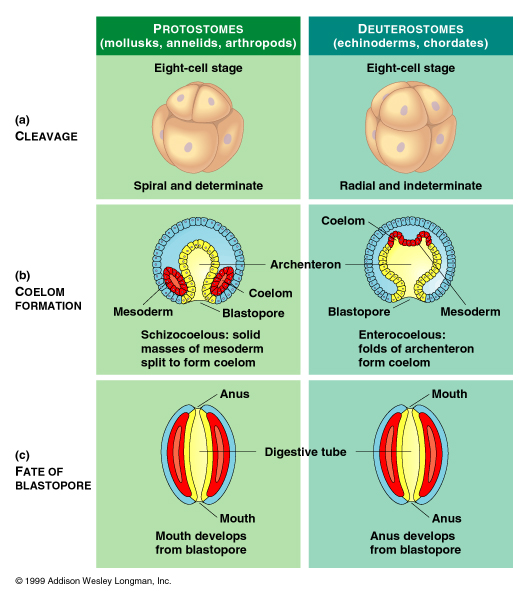Do you ever think about what it was like to be a single cell, eyeless and undifferentiated? Then, as you split into more and more cells, those parts of you migrated and took on different roles - light-sensing cells went to the eyes, cells lined themselves up in layers to make your three germ layers, and to divide you into a front side and a back side, a head and a tail. Your whole digestive system used to be just one big tube.
It turns out that the way you develop can reveal a lot about your ancestry - what animals you're most closely related to, that is, and how they adapted to their environments, changing their body forms over time.
For example, the origin of the heart still puzzles animal researchers. Its complex, multi-chambered structure in vertebrates isn't exactly mirrored by what was thought to be their closest relatives - the lancelet, a small, elongated, fish-like sea creature lacking jaws or sense organs. They have no distinct heart, just a blood vessel pumping colorless blood throughout the body. Enter the sea squirt, or tunicate - a little foreign-looking, but more related to chordates and more valuable to understanding the origin of human hearts.
| Grandpa? |
I know, it doesn't look like someone you'd see at a family reunion, but tunicates have complex body structures, including a U-shaped heart that squeezes blood through it. Sometimes, it actually reverses the direction of blood flow, though the reason for this isn't known. In their larval stage, they also have a notochord - a rod of cartilage that supports the body. However, they lose this when they mature and become sessile, or unmoving. The notochord in humans becomes the backbone.
Scientists researching cell differentiation in tunicates found that, when labeling cells that would form the heart, some of these cells wandered off to form the pharynx. This patch of cells, called "cardiopharyngeal", for how it gave rise to both the heart and muscles of the pharynx and jaw, is common to vertebrates and tunicates - similar differentiation has been observed in mice. The throat and the heart, organs from two very different systems, are linked, like childhood friends, based on what group of cells they came from. And vertebrates and tunicates are probably more linked than was previously thought. This also establishes how, in vertebrates, development of the respiratory, circulatory, and muscular systems are linked by ancient evolutionary trends, far back enough to connect you with your sea-squirt ancestry.

No comments:
Post a Comment